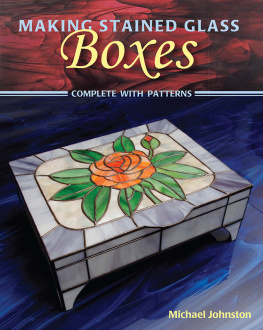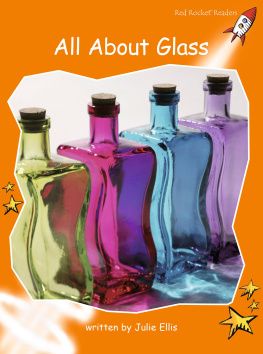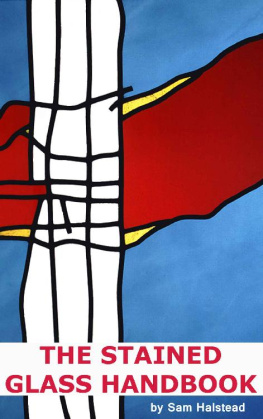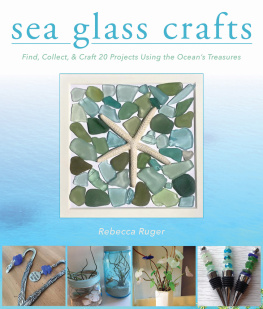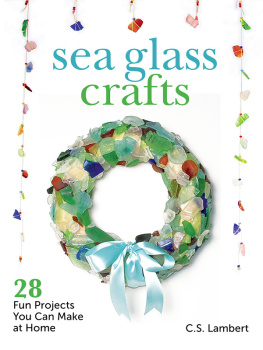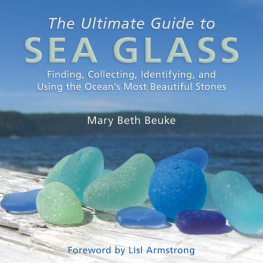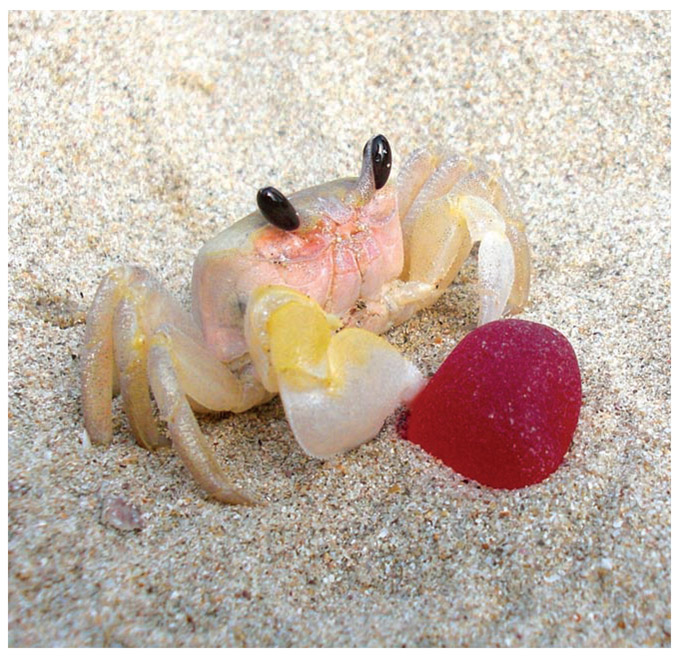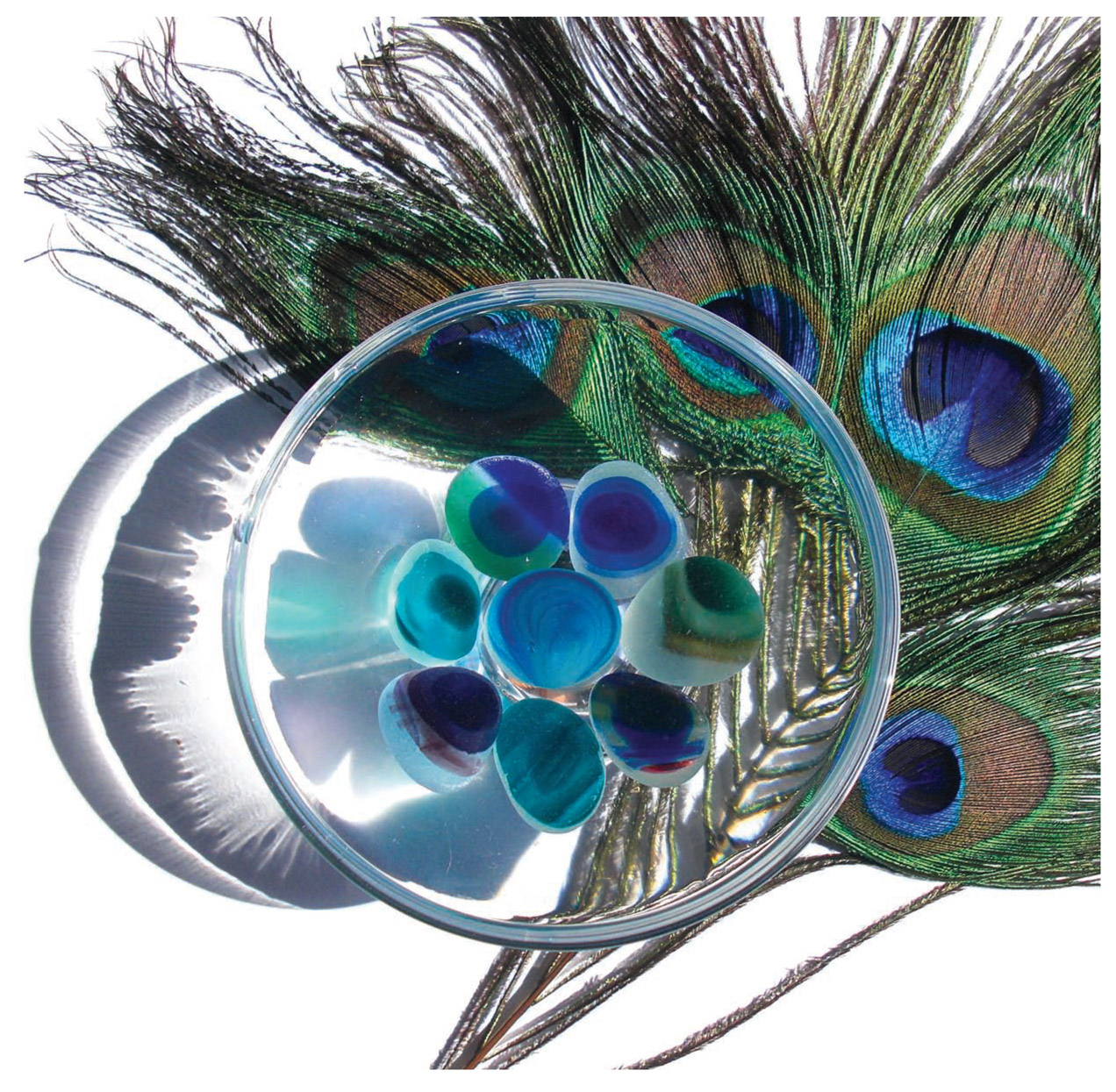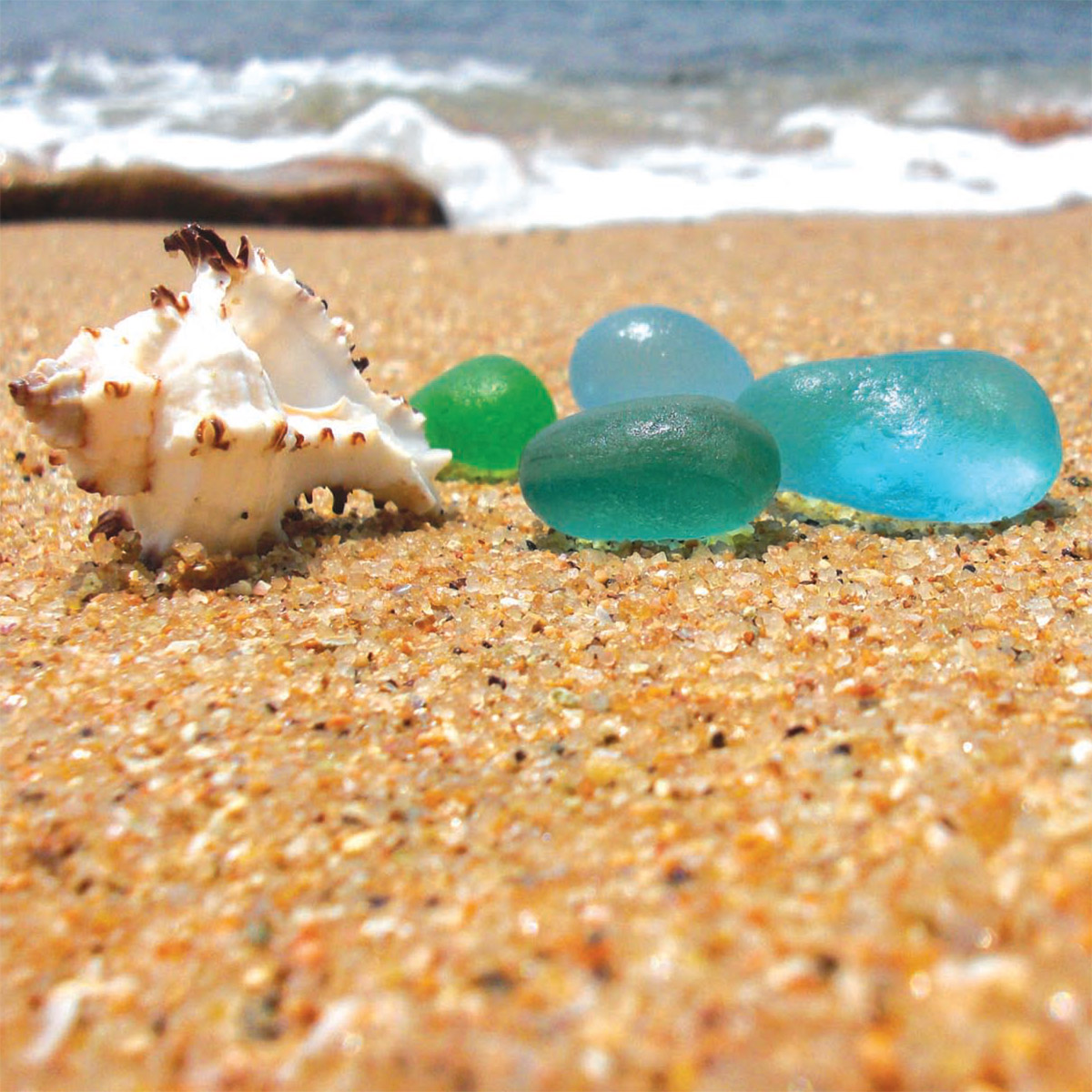This is my all-time favorite photo. I took a day off from work with the sole purpose of doing some sea glass photography at my favorite beach. I had hoped for a sunny day, but woke up to gray skies. I thought about working indoors instead, but went out anyway. When I arrived at the beach, the tide was high and still rising, waves were crashing and the clouds were heavy with rain. As the waves started to engulf the wooden planks where Id set my props, I realized they would make a more dynamic background. Right after I shot this picture, one of the multies started rolling away, but I managed to snatch it before it fell back into the sea.


Its easy to understand the message of this photo contrasting a rainbow with a black and white rainy background to show that sadness will be over, there are always better days ahead. This belief kept me going during some of the worst days of my life. In the photo, there are four interwoven layers, each representing different moments Ive experienced: A rainbow of sea glass in the top layer, a melancholic black and white photo in the middle layer, and a black mirror surface with reflections of trees in the bottom layer. The fourth layer raindrops interconnected all the other layers. I took the black and white photo on the way to visit my mother in the hospital, where I stayed eight hours every day for weeks before she died. It was the coldest winter month, the snow and leafless trees made me feel even more lonely and helpless. Months after, I was still overwhelmed with guilt, sadness, and tears. I represented these emotions with the black mirror, shady branches, and raindrops. The priceless gems of sea glass were once broken shards, polished by time and tide. I, too, will be stronger and better with every hardship I go through.


When the word seaglunking entered the English vocabulary in 2003, there were many detractors. Some thought it too cumbersome, inelegant, or, as one lifelong seaglass hunter put it: downright loathsome. The term, combining spelunking with sea glass hunting, was coined by Linda Mehlhorn of South Portland, Maine, who wanted a word to describe her hobby to family and friends. It sometimes takes a while for new words to merge into the language, but seaglunking exploded via magazines, newspapers, and off the lips of talk-show celebrities. One actress called the word sexy.
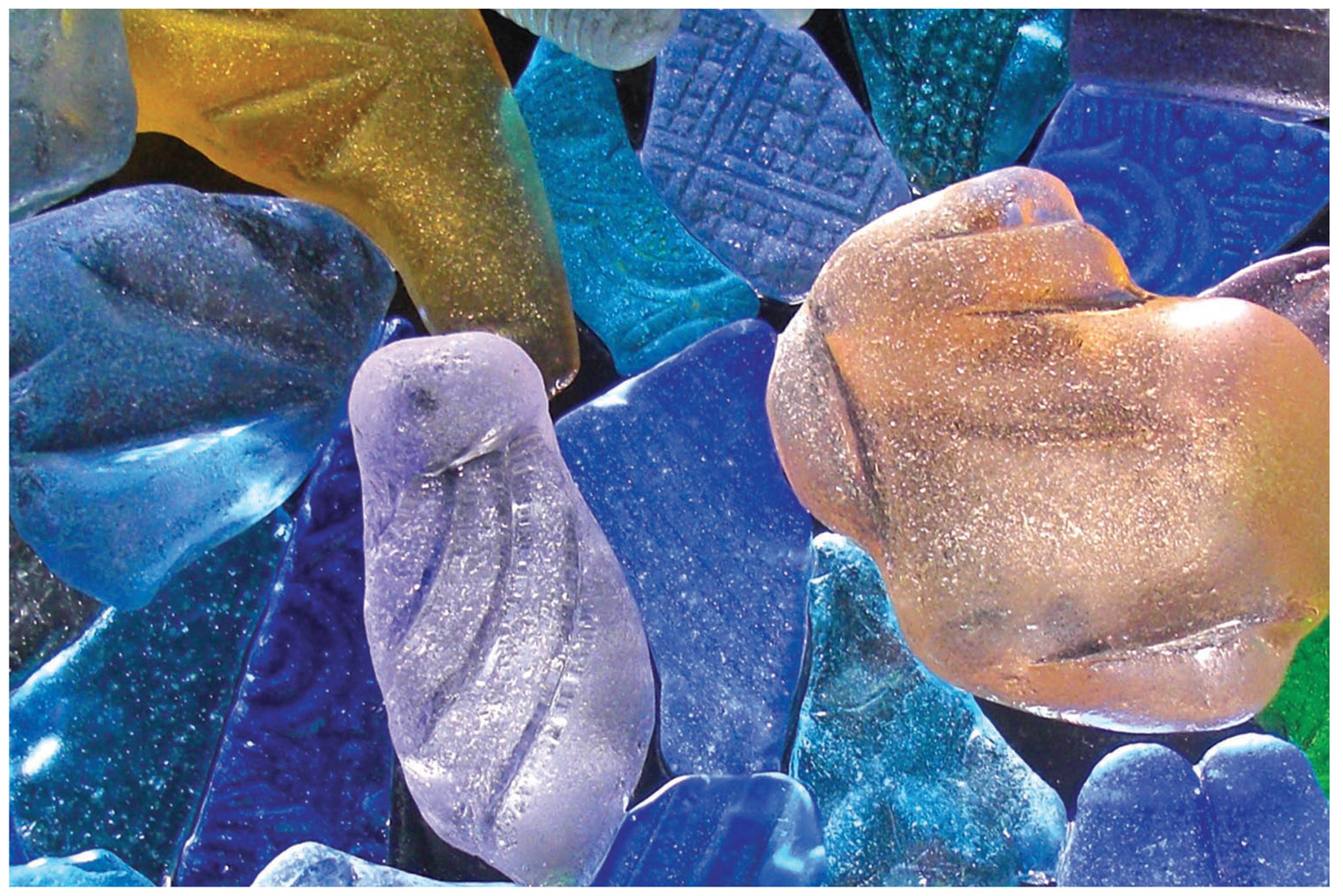



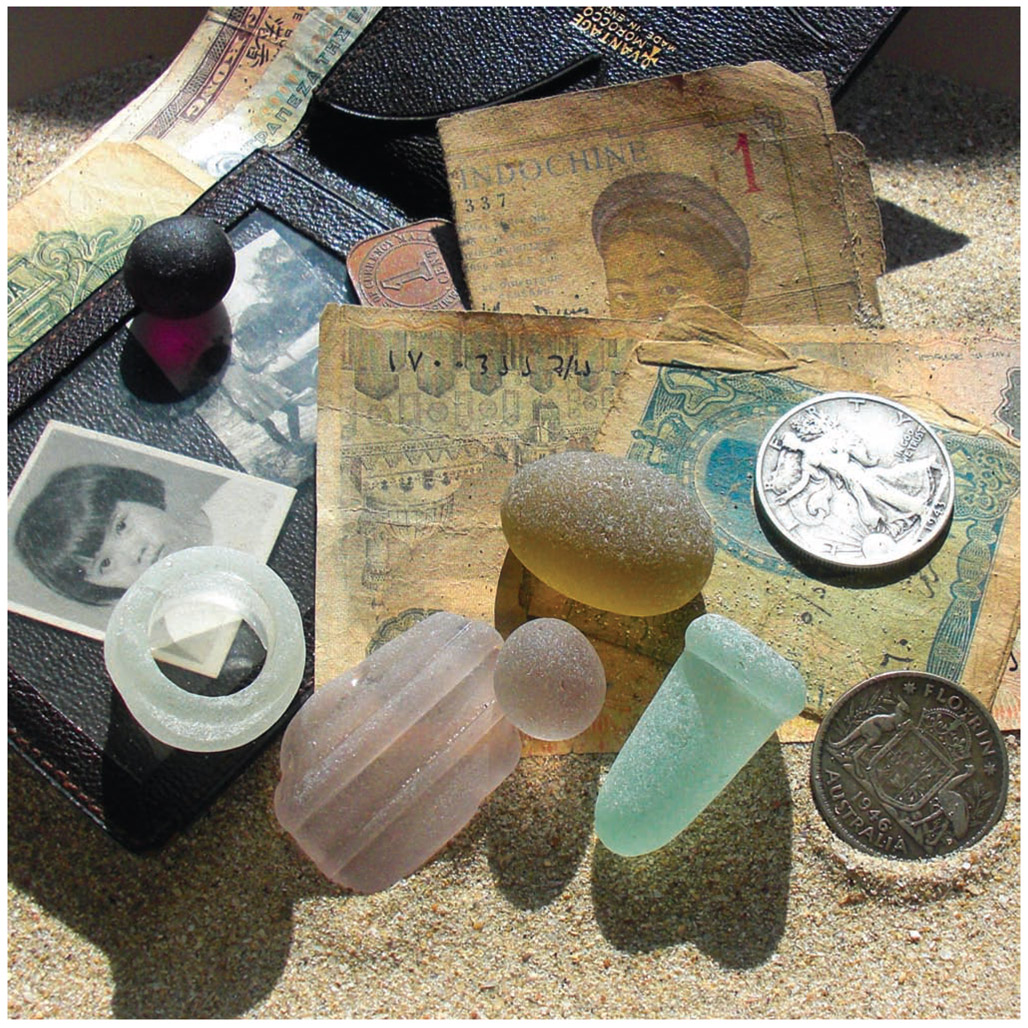

These seaglass multies look like colorfully dressed people here, flocking toward a majestic castle in the distance. I call this picture Sea Glass Pilgrimage, and it was in my mind for weeks before I finally put it into reality. In crowded Hong Kong, its never easy to find a deserted beach in the middle of summer except very early in the morning. So I got there before sunrise. When I finished making the sand castle and setting up the sea glass, people just started arriving. I sprayed the sea glass with water to make the colors more vivid, then lay flat on my stomach (the crabs eye view), which I think is the best angle for capturing sea glasss beauty. But things didnt go that smoothly. Though it was just morning, the sun was already fiery hot. The sea glass quickly dried and the colors dulled. I got up, sprayed, and went back to my spot, only to discover some sea glass people had fallen over. I got up, helped the sea glass to its feet, sprayed, and went back to shooting. My routine for the next half hour was get up, replace sea glass, spray, lie down, shoot. Finally, there were so many people around, amused and wondering what this frantic woman was doing taking up precious sun-tanning ground that I just had to leave. So I calmly gathered up my treasures and spray bottle, leaving the sand castle to some delighted kids.
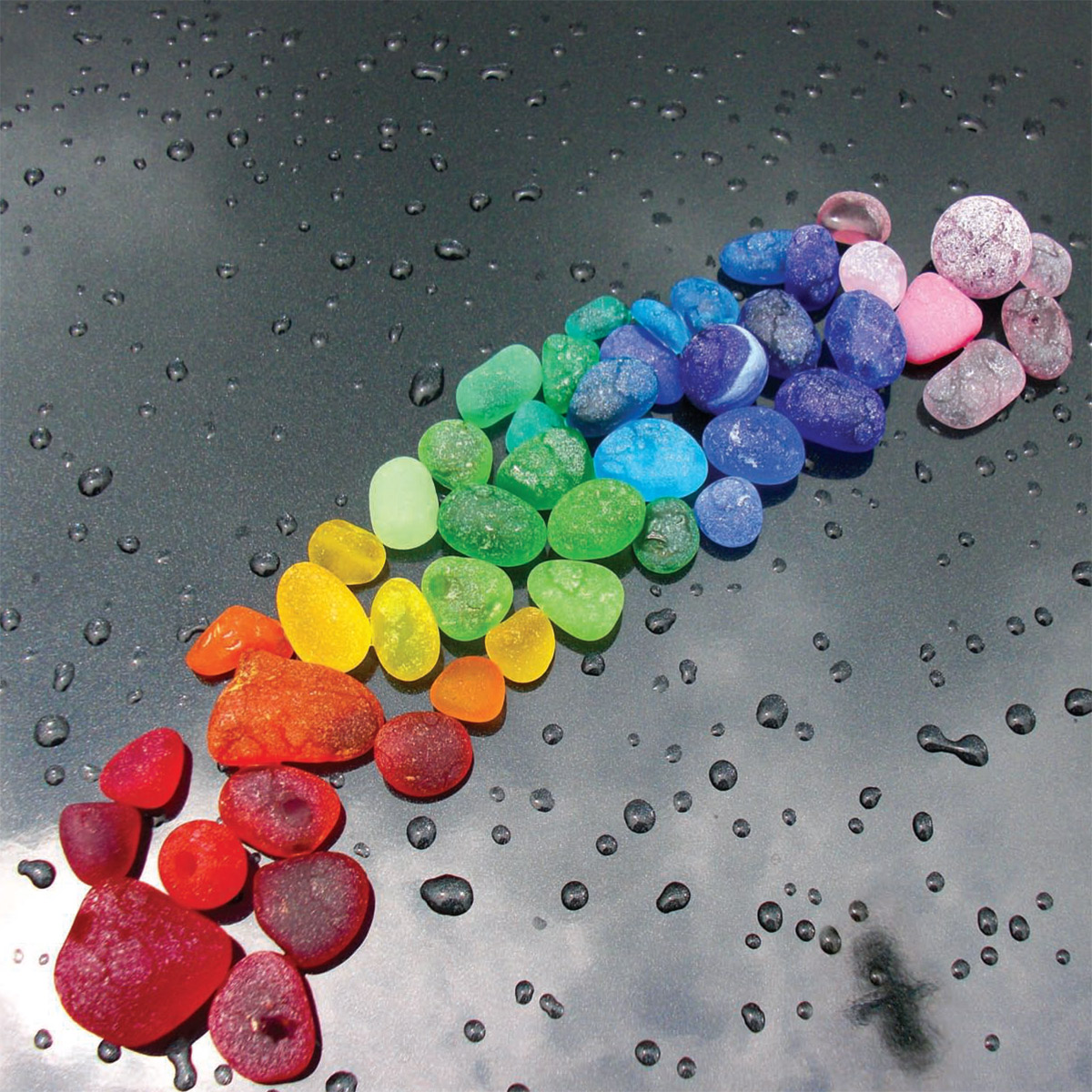
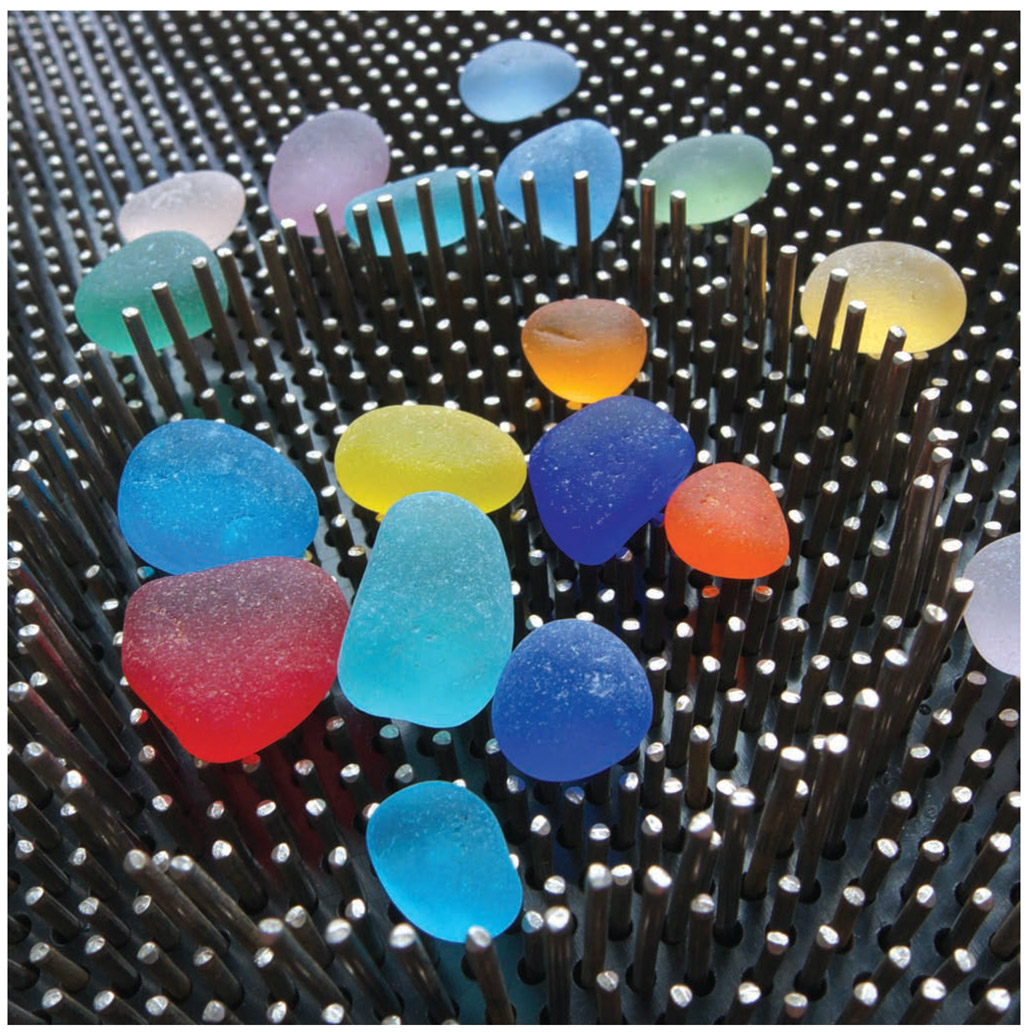
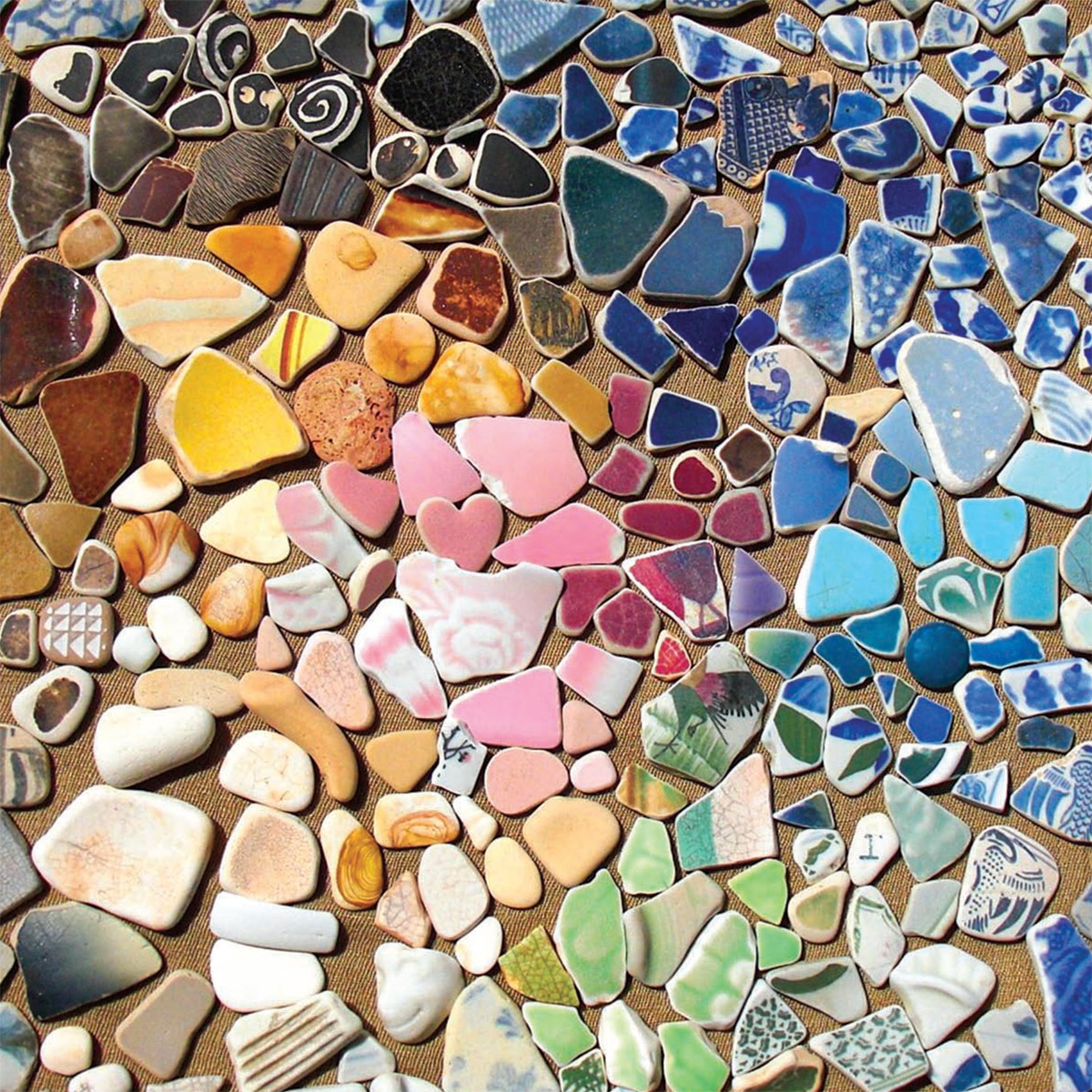
Sometimes the best sea glass isnt glass at all, but fragments of pottery. These non-glass pieces have been dubbed shards, which might be confusing to outsiders since the definition of shards is fragments of brittle objects, including glass. Nonetheless, increasing numbers of beachcombers prefer pottery shards to sea glass because pottery is more difficult to spot and offers greater clues to origins and dates of manufacture. The moniker shardhead has been infiltrating beaches in recent years.
This crab was stunned by my huge presence, and played dead in its track. In slow motion, I knelt down, offered it my best piece of red glass and clicked away. A few moments later, it gathered up courage and scurried off. It was so sweet of him to pose especially for me.
English sea glass multies in whirls and layers of peacock shades their rich colors and patterns are best appreciated when wet and under bright sunlight. I experimented with glass vessels of different shapes until I found this shallow dish, deep enough to immerse all the glass and just the right size so it doesnt get in the way of the peacock feathers behind it. It was a very sunny day. The sea glass cast colorful shadows, and the water made interesting patterns at the edge of the dish.
Next page

